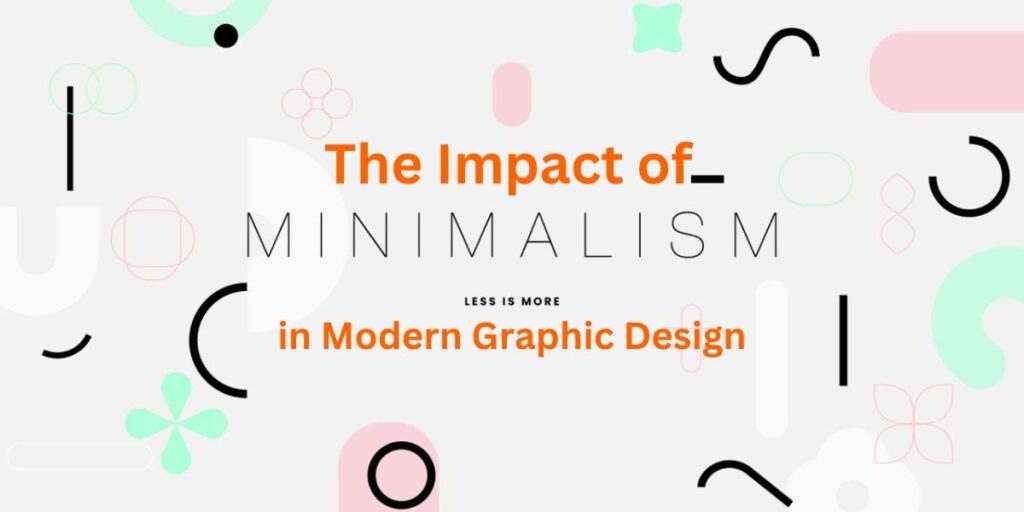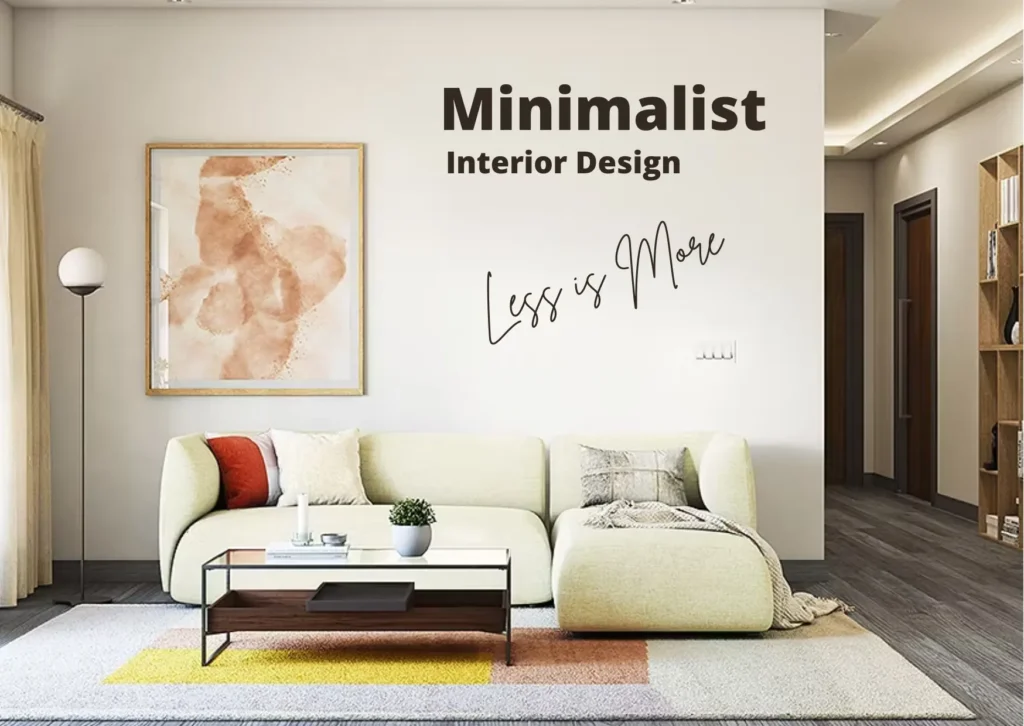Less is More in Graphic Design
In a world saturated with visual stimuli, the philosophy of minimalism in graphic design stands as a timeless and impactful approach. The mantra “less is more” has become a guiding principle for designers seeking simplicity, clarity, and effective communication. In this blog post, we’ll explore the foundations of minimalism, its evolution, and how it continues to shape the visual landscape Less is More in Graphic Design

Understanding Minimalism in Graphic Design
1. Stripping Away the Non-Essentials
At its core, minimalism in graphic design is about distilling a message to its essential elements. It involves stripping away unnecessary details, ornamentation, and distractions, leaving only what is vital for clear communication. This simplicity aims to create a visual language that is both elegant and impactful.
2. Embracing White Space
White space, or negative space, plays a crucial role in minimalistic design. It is not merely empty space but a deliberate choice to let elements breathe and allow the viewer’s focus to land on key elements. White space enhances readability, reduces visual clutter, and contributes to an overall sense of balance.
3. Typography as a Focal Point
In minimalist design, typography often takes center stage. Clean, sans-serif fonts with ample spacing are favored. The choice of typeface and its arrangement become pivotal in conveying the intended message without unnecessary embellishments.
Evolution of Minimalism in Graphic Design
1. Bauhaus Movement: Origins of Minimalist Principles
The roots of minimalism in graphic design can be traced back to the Bauhaus movement of the early 20th century. Bauhaus emphasized functionality, simplicity, and the harmonious integration of form and function. Designers like Walter Gropius and Mies van der Rohe laid the groundwork for a design philosophy that would later evolve into minimalism.
2. Swiss Style: Precision and Order
The Swiss Style, or International Typographic Style, emerged in the 1950s and further refined the principles of minimalism. Designers like Josef Müller-Brockmann and Max Miedinger embraced grid systems, clean typography, and a focus on information hierarchy. The Swiss Style became synonymous with clarity and precision.
3. Japanese Influence: Zen Aesthetics
Japanese design aesthetics, rooted in Zen philosophy, significantly influenced minimalism. Concepts like “ma” (the Japanese term for negative space) and the use of simplicity to convey profound ideas became integral to minimalist graphic design. The works of designers like Ikko Tanaka exemplify the fusion of traditional Japanese aesthetics with modern design principles.

Key Principles of Minimalist Graphic Design
1. Simplicity and Clarity
Minimalism prioritizes simplicity in form and clarity in communication. Strive for a design that conveys the message directly and without unnecessary embellishments. Every element should have a purpose.
2. Consistent Color Palette
A minimalistic color palette is often limited to a few carefully chosen colors. This restriction adds to the visual coherence of the design. Monochromatic schemes or muted tones are common in minimalist graphic design.
3. Functional Typography
Typography in minimalism is clean, readable, and purposeful. Select typefaces that align with the overall aesthetic and ensure optimal legibility. Use font weights and sizes deliberately to create hierarchy and emphasis.
4. Precise Grid Systems
Grid systems provide structure and organization in minimalist design. Consistent alignment and spacing contribute to a sense of order. The grid acts as an invisible guide that maintains visual harmony.
Application of Minimalism in Various Design Mediums
1. Branding and Logos
Many iconic logos embody minimalist principles. Think of the Apple logo—a simple, clean apple silhouette. Minimalist logos are memorable and instantly recognizable, reflecting the essence of the brand in a distilled form.
2. Web Design
Minimalism has had a profound impact on web design, where clarity and ease of navigation are paramount. Clean layouts, ample white space, and a focus on essential elements contribute to a seamless and user-friendly online experience.
3. Editorial Design
Magazines and books often adopt minimalist design for covers and layouts. A balance of text and imagery, strategic use of white space, and a consistent visual language create a compelling and sophisticated reading experience.
4. Product Packaging
Minimalist packaging design emphasizes simplicity and elegance. Uncluttered packaging allows products to stand out on shelves and appeals to consumers seeking a clean and modern aesthetic.
Challenges and Criticisms of Minimalism
1. Risk of Oversimplification
One challenge in minimalist design is the potential for oversimplification. Removing too many elements may result in a lack of visual interest or fail to effectively convey the intended message.
2. Misinterpretation of Simplicity
Critics argue that the pursuit of simplicity in minimalism can be misunderstood as a lack of creativity or depth. Achieving simplicity without sacrificing impact requires a thoughtful approach.
3. Balancing Consistency and Uniqueness
Maintaining consistency in a minimalist design while also ensuring uniqueness poses a delicate balance. Striking this equilibrium is essential to stand out while adhering to the principles of minimalism.
Case Studies: Minimalism in Action
1. Nike: The Swoosh
The Nike logo, a simple swoosh, is a testament to the power of minimalist design. The swoosh embodies movement and energy with just a single, elegant stroke.
2. Google: Streamlined Interface
Google’s search interface exemplifies minimalism. The clean white background, a simple search bar, and focused results demonstrate how simplicity enhances user experience.
3. Muji: Simplifying Everyday Products
Muji, a Japanese brand, embraces minimalism in its product design. From stationery to furniture, Muji products prioritize simplicity, functionality, and a neutral color palette.
The Timeless Appeal of Minimalism
Minimalism in graphic design has proven to be more than just a passing trend—it has become a timeless approach that withstands the test of evolving design landscapes. Its enduring appeal lies in its ability to convey sophistication, communicate effectively, and evoke a sense of calm in a visually cluttered world.
As designers continue to explore and experiment with various styles, minimalism remains a reliable foundation—a design philosophy that champions the notion that sometimes, less is indeed more. By embracing the principles of simplicity, clarity, and purposeful design, graphic designers can create visually arresting compositions that stand out in their elegance and resonate with audiences across diverse contexts.
i hope we can explain Less is More in Graphic Design in better way.


